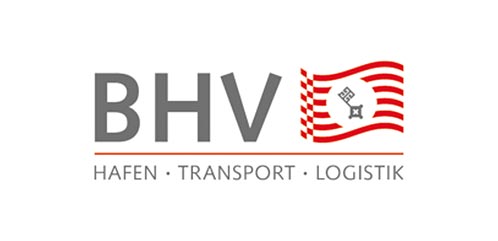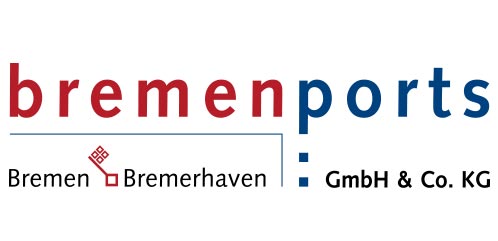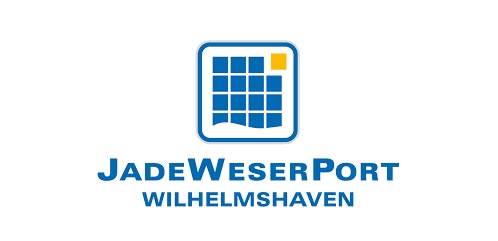In view of increasing digitisation, protection against cybercrime is becoming more and more important in ports. As part of the joint project “SecProPort”, a comprehensive IT security architecture is currently being developed for this purpose.
photos: Karin Steffen-Witt, iStock/Steffen_F
Ein solches Horrorszenario gilt es zu verhindern: Die Hafeninfrastruktur fällt infolge von Sabotage durch Hacker längerfristig aus, was zu Versorgungsengpässen in der Industrie und bei der Bevölkerung führt. Dass diese Gefahr real ist, zeigen die zunehmenden Attacken auf alle Branchen mit immer stärkeren wirtschaftlichen Auswirkungen. Allein der deutschen Wirtschaft entsteht durch Diebstahl, Spionage und Sabotage von Daten jährlich ein Gesamtschaden in Höhe von 223 Milliarden Euro. Das ergab eine Anfang August veröffentlichte repräsentative Studie des Digitalverbands Bitkom. Besonders bedroht sehen sich dabei die Betreiber kritischer Infrastrukturen: 52 Prozent erwarten eine starke Zunahme von Angriffen auf ihr Unternehmen.
See- und Binnenhäfen sind auch deshalb besonders angreifbar, weil sie immer vernetzter und stärker mit elektronisch verfügbaren Informationen arbeiten. Denn alle am Hafentransport beteiligten Akteure wie Terminalbetreiber, Reeder und Spediteure sowie die Betreiber von Hafen-IT, Bahn, Hafenbehörden und Zoll sind in einem komplexen Hafenkommunikationsverbund (HKV) miteinander vernetzt und tauschen untereinander Informationen aus. Dementsprechend gewinnt der Schutz nicht nur aller Beteiligten mit ihren jeweiligen Anwendungen, sondern des gesamten Verbunds vor Cyberangriffen stetig an Bedeutung, da diese über das „Port Community System“ direkt miteinander kommunizieren.
Schutz aller im Hafenkommunikationsverbund
Würde es einem Angreifer beispielsweise gelingen, Teilnehmer des Verbunds zu werden – sei es durch einen Angriff auf das IT-System eines Hafenakteurs oder als Innentäter –, könnte er anschließend versuchen, manipulierte Nachrichten in das Gesamtsystem einzuspielen. Diese würden auf den ersten Blick korrekt aussehen und daher weiterverarbeitet. „Selbst wenn also die einzelnen Systeme der Hafenakteure nach dem Stand der Technik abgesichert sind, bedeutet das nicht automatisch, dass der gesamte Hafenkommunikationsverbund im Zusammenspiel sicher ist – und das vor dem Hintergrund, dass IT-Angriffe in Zukunft immer raffinierter werden“, betont Karin Steffen-Witt, Standortleiterin in Lübeck beim IT-Dienstleister dbh Logistics und Projektleiterin.
Ziel des im November 2018 vom BMVI im Rahmen des Programms „Innovative Hafentechnologien“ (IHATEC) über eine Laufzeit von drei Jahren geförderten Verbundprojekts „SecProPort“ sei es, eine Sicherheitsarchitektur für die verschiedenen Workflows zu schaffen, sodass das Gesamtsystem auch im Fall eines Angriffs jederzeit funktionsfähig bleibe.„Dafür haben wir zunächst etwa ein Jahr lang die komplexen Kommunikationsstrukturen genau analysiert.“ Das beinhaltete die Prozesse, die Ermittlung der Gefährdungen, die IT-Landschaft, den Schutzbedarf und die Risiken sowie ein Rechtsgutachten mit den Anforderungen des HKV. „Entstanden sind dabei riesige tapetenartige Schaubilder“, so Steffen-Witt.
Als potenziell gefährdet sieht die Projektleiterin beispielsweise personenbezogene Daten und Angaben zum Gefahrgut und zur Zollfreigabe. „Dabei geht es immer um drei Aspekte – die Vertraulichkeit, die Verfügbarkeit und die Authentizität.“ Schließlich ist es gleichermaßen riskant, wenn die betreffende Person eine Nachricht nicht erhält oder wenn Informationen über einen Adressaten hinaus an weitere Empfänger gelangen. Wichtig ist den acht Projektpartnern dbh Logistics, BLG LOGISTICS Group, Datenschutz Cert, Deutsches Forschungszentrum für Künstliche Intelligenz, Duisburger Hafen, Hapag-Lloyd, ISL Institut für Seeverkehrswirtschaft und Logistik und der Universität Bremen sowie den assoziierten Partnern bremenports, Eurogate, Niedersachsen Ports und JadeWeserPort, wie in den vorhandenen IT-Strukturen die Sicherheit erhöht werden kann.

“We initially spent about a year analysing the complex communication structures in detail.”
Karin Steffen-Witt, Project Leader and Site Manager Lübeck, dbh Logistics
Entire system must resist attacks
The project is subdivided into work packages, four of which are currently being worked on. For example, a demonstrator is being used to simulate interventions in the communication that has been running up to now during normal operation. “This data is then processed without intervening in individ-ual software systems,” explained Steffen-Witt. “The requirements for the applications of the individual port stakeholders are then derived from the improved security architecture, and migration plans are developed,” said the project manager. “Ultimately, the intention is to implement security architecture at individual application partners to prove its practical relevance.” The goal is to incorporate the project results into an industry-specific standard for information security in German ports.
Steffen-Witt describes this innovative joint project as follows: “Normally, every IT department works by itself. However, not every company protects itself in the same way. Here, all participants are now working together to achieve better resilience against cyberattacks for all partners in the communications network.” The solution developed can be transferred to other communication networks, for example in other ports. However, cooperation in pandemic times would need to be re-established. “We had actually planned a big meeting with workshops in Duisburg,” the project man-ager recalled. “Instead, we completely changed our way of working, formed smaller groups and met virtually.” In the meantime, this method works very well. Another challenge – even in “normal” times – is experts and scientists exchanging information: “They are definitely different worlds and vocabularies that meet up here. Since everyone wants to have a good working relationship, that has also worked out well in the meantime.” (cb)
More information:
www.dbh.de
More Information
Logistics Pilot
The current print edition - request it now free of charge.







